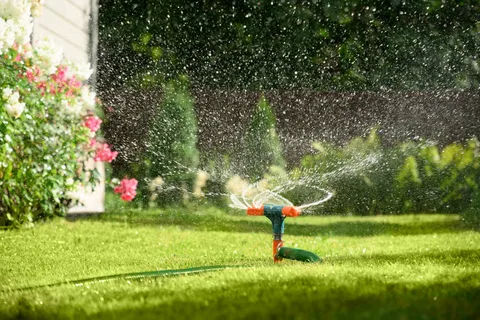A pond is more than a decorative element—it’s a living ecosystem where plants, fish, and microorganisms coexist. To keep that ecosystem thriving, oxygen is essential. Without enough oxygen, water stagnates, fish suffer, and harmful bacteria take over. That’s where pond air pumps come in. These powerful yet simple devices ensure proper aeration, keeping your pond clear, balanced, and full of life.
Why Aeration Is Essential for Every Pond
Water might look calm and still, but beneath the surface, a complex biological system is at work. Fish and beneficial bacteria rely on oxygen to survive and break down waste. In stagnant water, oxygen levels drop quickly—especially during warm weather or at night when plants consume oxygen instead of producing it.
A pond air pump solves this by circulating air throughout the water, increasing oxygen levels and promoting movement. This simple process prevents algae blooms, foul odors, and fish stress while maintaining a healthier pond ecosystem. Whether you have a small ornamental pond or a large koi pond, aeration is the key to keeping it vibrant and crystal clear.
How Pond Air Pumps Work
Pond air pumps operate by pushing air through tubing into diffusers or air stones placed at the bottom of the pond. These release a stream of tiny bubbles that rise to the surface, circulating the water and mixing oxygen evenly throughout.
This process provides several key benefits:
- Improved Oxygen Levels: Ensures fish, plants, and bacteria have a constant oxygen supply.
- Enhanced Water Quality: Prevents the buildup of harmful gases like ammonia and carbon dioxide.
- Reduced Algae Growth: By keeping water moving, air pumps disrupt stagnant zones where algae thrive.
- Better Filtration Efficiency: Increased circulation helps filters process waste more effectively.
- Winter Protection: In colder months, air pumps prevent ice from sealing the pond’s surface completely, allowing gases to escape safely.
Simply put, a pond air pump keeps your water alive and your pond balanced year-round.
Choosing the Right Pond Air Pump
Selecting the right air pump depends on your pond’s size, depth, and fish population. For smaller garden ponds, compact air pumps with one or two air stones are usually sufficient. Larger or heavily stocked ponds, especially those with koi, require more powerful systems capable of producing higher air volumes.
When choosing a pump, consider the following:
- Air Output: Measured in liters per minute (LPM), this determines how much oxygen the pump can deliver.
- Energy Efficiency: Look for models designed for continuous use with low power consumption.
- Durability: Outdoor-rated pumps with weatherproof casings are essential for year-round performance.
- Noise Level: Modern air pumps, like those from Evolution Aqua or Oase, operate quietly—ideal for peaceful garden settings.
Proper placement of air stones is equally important. Position them in deeper sections for maximum circulation, but avoid placing them directly beneath waterfalls or filters where aeration is already strong.
Conclusion
Pond air pumps are the unsung heroes of healthy, thriving ponds. They enhance oxygen levels, improve water quality, and create a balanced environment where aquatic life flourishes. Whether you’re maintaining a tranquil garden pond or a vibrant koi habitat, investing in a reliable air pump is one of the smartest decisions you can make. After all, clear, oxygen-rich water doesn’t just look beautiful—it breathes life into your entire pond ecosystem.

